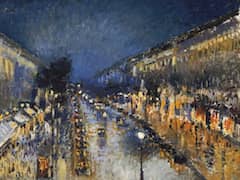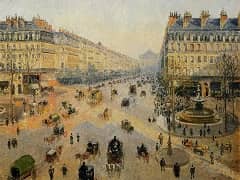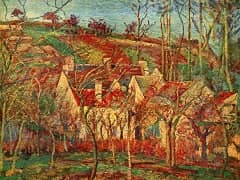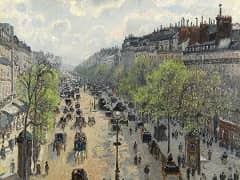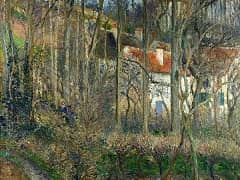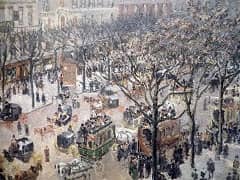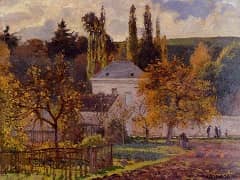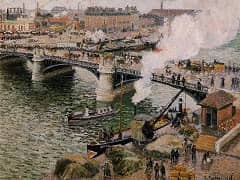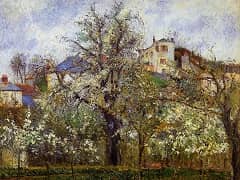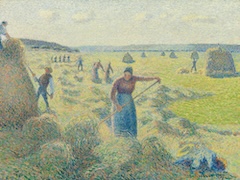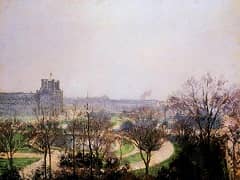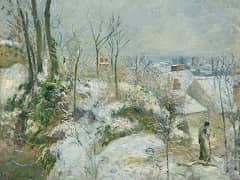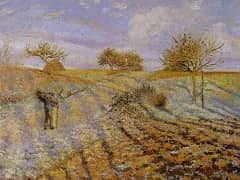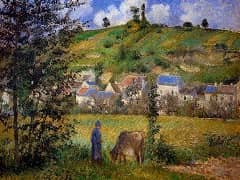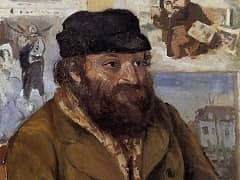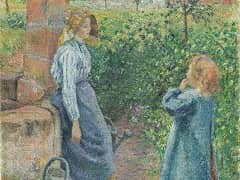Landscape at Chaponval, 1880 by Camille Pissarro

The Fourth Impressionist Exhibition was held in Paris at 28 avenue de l'Opera and opened on 10 April 1879. Pissarro, who was the only artist to include works in all seven exhibitions, submitted thirty-eight works.
Pierre-Auguste Renoir , Sisley and Paul Cezanne, who felt disillusioned by the lack of recognition they had achieved, did not participate.
Despite the diminishing numbers of the original group from the First Impressionist Exhibition, Pissarro was keen to continue with the series and the subsequent fifth and sixth shows were held with a year's gap in between,
in 1880 and 1881.
The derision and lack of understanding continued, perpetuating the financial hardship of almost all the Impressionist painters. It also gave Pissarro the time to reconsider the direction his painting was taking. Until
now he had been concerned with the recession of space and his compositions had been carefully structured into the basic elements of foreground, middleground and background.
In Landscape at Chapponval Pissarro pushes the formation of horizontal bands to the extreme. Rather than giving an illusion of reality and depth, the painting is almost abstract in its composition. The bands
made up of field, houses, hill and sky seem almost to sit on top of one another, rather like the figures in a medieval tapestry. The figure also seems to play a different role. Rather than being merged into the landscape,
the cow girl and her charge stand resolutely in the central foreground and demand our attention. Pissarro's use of blue was also significant in his approach to the abstract, and caused a certain reaction from the critics.
Not only are the sky and girl's dress blue, but so too are the roofs of the houses.

